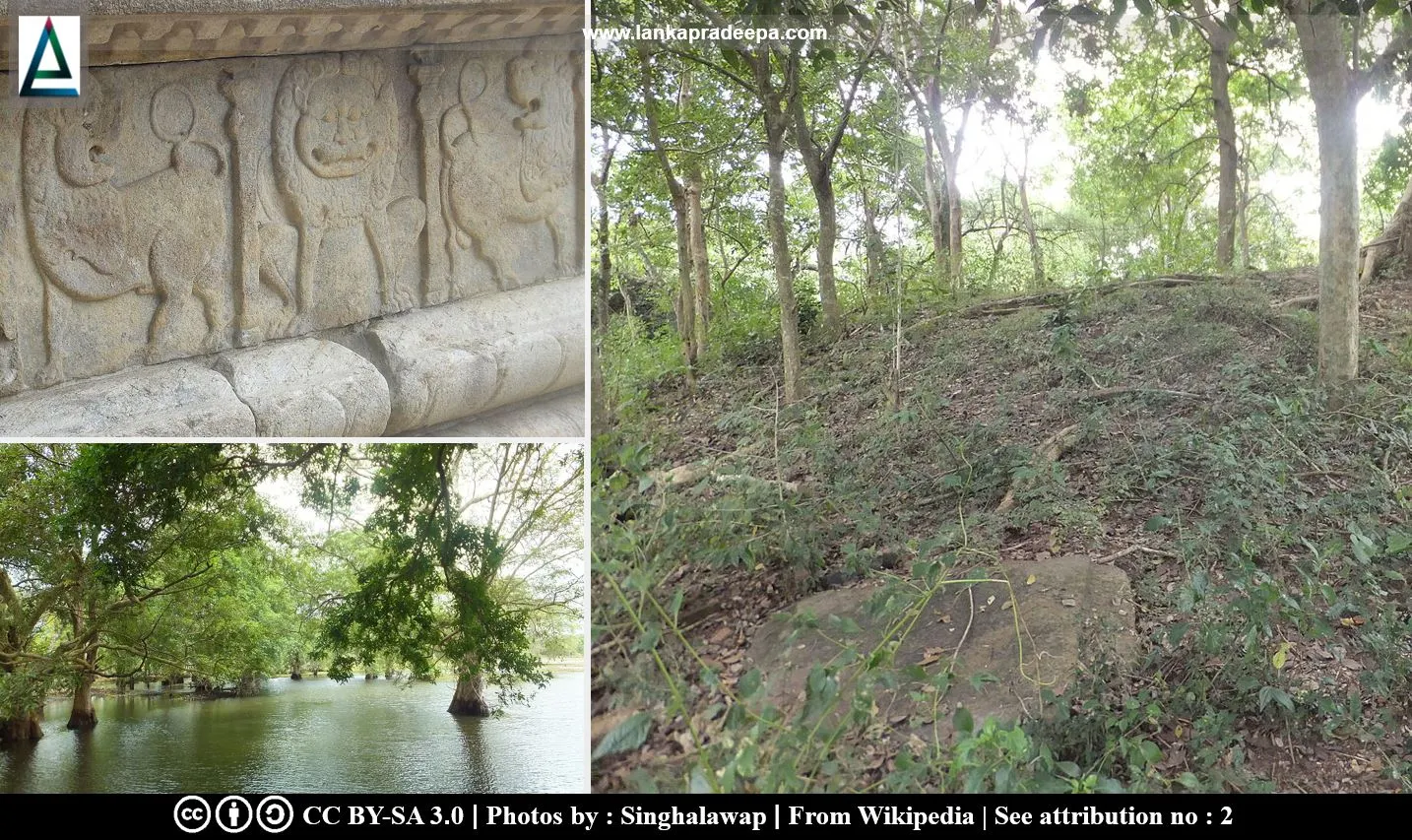
Nillakgama Bodhigharaya (Sinhala: නිල්ලක්ගම බෝධිඝරය) is an ancient Bodhi Tree Shrine located in the village of Nillakgama in Kurunegala District, Sri Lanka.
Bodhighara
Bodhi trees are venerated by Buddhists from the earliest times as it is associated with the Buddha's enlightenment. In Sri Lanka, the worship of the Bodhi tree became prevalent after the arrival of Theri Sanghamitta who brought a Sapling of the Bodhi tree (India) in the 3rd century B.C. (Wijesuriya & Weerasekera, 1997). Within a short time, every temple had its own Bodhi tree and that led the people to develop and construct a special type of building around the tree called Bodhighara (The National Atlas of Sri Lanka, 2007; Wijesuriya & Weerasekera, 1997).
History
The Bodhigharaya at Nillakgama is believed to be a work of the 8th-9th centuries A.D. (Anuradha & Kumari, 2015; Nicholas, 1963). The ruined site was first noticed in 1895, by H.C.P. Bell but its true identity remained unsolved (Bandaranayake, 1974). In 1954, the eminent archaeologist Senarath Paranavitana identified the structure as a Bodhigharaya and dated it with the help of an inscription found in situ (Bandaranayake, 1974).
Nillakgama Bodhigharaya Inscription
Period: 9th-10th centuries A.D.
Scripts: Medieval Sinhalese
Language: Medieval Sinhalese
Transcript: Monaragal budmi me dasa ethun karawa maha bohi pidu pinhi belen antuhara samma sambudu vemva
Translation: I am Bud (resident of) Monaragal. By the fruit of the merit acquired by offering these ten sculptured figures of elephants to the great Bodhi (tree), (may I become) a Supreme Perfect Buddha.
;
Reference: Ranawella, 2005.
The Structure
Nillakgama Bodhigharaya consists of 2 platforms. The lower platform is square in shape (34 ft) and bordered by a stone parapet wall of 7 ft. high, on which were 16 stone pillars used to support the pavilion enclosing the tree (Paranavitana, 1959). The upper platform is 13 ft square and was the ground for the Bodhi tree. The two entrances (doorways) which make access to the lower platform and the retaining walls of the upper platform have been decorated with sculptures (Paranavitana, 1959).


References
1) Anuradha, R.K.S.; Kumari, A.S., 2015. Pauranika Sthana Saha Smaraka: Kurunegala Distrikkaya (In Sinhala). Department of Archaeology (Sri Lanka). ISBN: 955-9159-37-2. pp.56-57.
2) Bandaranayake, S.D., 1974. Sinhalese monastic architecture: the Viharas of Anuradhapura (Vol. 4). Brill. pp.161-164.
3) Nicholas, C. W., 1963. Historical topography of ancient and medieval Ceylon. Journal of the Ceylon Branch of the Royal Asiatic Society, New Series (Vol VI). Special Number: Colombo. Royal Asiatic Society (Ceylon Branch). p.179.
4) Ray, H.C. (ed), 1959. History of Ceylon: Vol. I, Part I. University of Ceylon. p.398.
5) Ranawella, S., 2005. Inscription of Ceylon. Volume V, Part
III. Department of Archaeology. ISBN: 955-91-59-57-7. p.154.
6) The National Atlas of Sri Lanka, 2007. (2nd ed.) Survey Department of Sri Lanka. ISBN: 955-9059-04-1. p.102.
7) Wijesuriya, G.; Weerasekera, H., 1997. Footprints of our heritage. Sri Lanka National Commission for UNESCO. ISBN: 955-9043-32-3. p.57.
Attribution
1) නිල්ලග්ගම බෝධි ඝරය by Singhalawap is licensed under CC BY-SA 3.0
2) නිල්ලග්ගම දාගැබ, නිල්ලග්ගම වැව and නිල්ලග්ගම බෝධිගරය ගල්කැටයම් by Singhalawap are licensed under CC BY-SA 3.0

